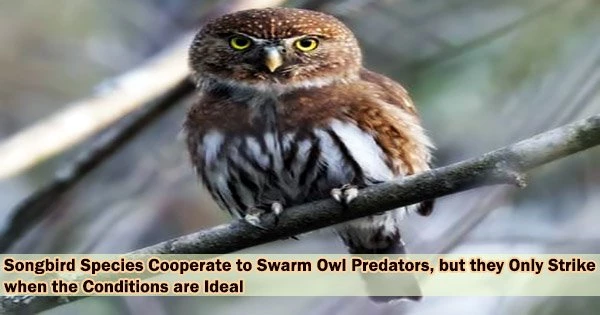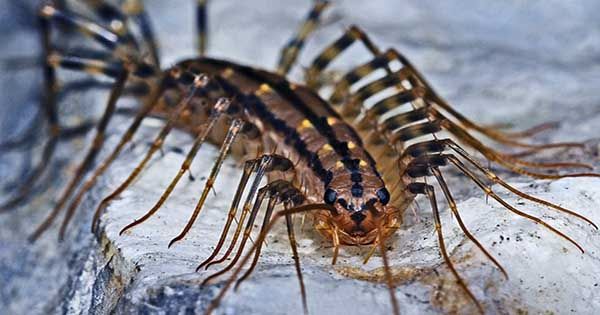Songbirds have other means of defense against predators besides fleeing. Mobbing is a behavior that several songbird species are known to engage in, where they aggressively congregate around a bird of prey while flying quickly and emitting loud vocalizations. Mobbing is dangerous for both parties because both birds of prey and songbirds have been known to inflict harm on each other. Birds of prey have been seen to attack their mobbers.
Now, Oregon State University scientists have demonstrated that, depending on the time of year and the location, songbirds can determine when the risk of predation by a common predator is at its highest.
As a result, they engage in mobbing more frequently. They are more likely to avoid or ignore the predator in this case, the northern pygmy owl when the risk is low. These results are published in Frontiers in Ecology and Evolution.
“Mobbing must be energetically costly, because we find that it’s rare during winter, when food is scarce but there are still plenty of songbirds around,” said second author Prof. W. Douglas Robinson from Oregon State University.
“On top of this effect, the likelihood of mobbing also increased as the number of songbirds present increased, diluting the risk to each mobber. Thus songbirds can assess when the risk of predation from northern pygmy owls is highest and when there is safety in numbers.”
Ambush predator of mammals and birds
Robinson and his graduate student, Madeleine Scott, the study’s first author, studied mobbing of northern pygmy owls (Glaucidium gnoma) in western Oregon, U.S., near the town of Corvallis and in the nearby Pacific Mountain Systems. A small, nocturnal owl species found in western North America is the northern pygmy owl. Typically, they ambush small mammals and songbirds before attacking them.
The proportion of small birds relative to small mammals in the diet of the northern pygmy owl almost doubles from spring to summer, making birds the primary food source in summer. This is presumably because of the increasing availability of fledged offspring birds.
Madeleine Scott
“The proportion of small birds relative to small mammals in the diet of the northern pygmy owl almost doubles from spring to summer, making birds the primary food source in summer. This is presumably because of the increasing availability of fledged offspring birds,” said Scott.
Mobbing elicited by playback of owl calls
Throughout 2020 and 2021, Scott and Robinson played back recordings of the advertising call of the northern pygmy owl a total of 663 times from 547 different locations at altitudes between 80 and 1,200 meters, to provoke mobbing.
Each replay lasted one minute and was delivered using a speaker that was installed on a 3.3-meter pole. The purpose of the northern pygmy owl’s year-round calling (which can last up to 60 minutes at a time) is to entice mates and establish territories.
The number and species of songbirds present within 50 meters of the speaker were counted both before and after each playback by the authors. Additionally, they recorded whether the songbirds grew louder in their own vocalizations, moved closer than five meters to the speaker, or displayed any mob behavior toward it.
Overall, mobbing was observed in 8.1% of trials. During the late summer and fall, when northern pygmy owls primarily prey on young birds, mobbing behavior peaked (observed in as many as 23% of trials), it was uncommon (1% in spring and winter), when they primarily prey on small mammals. Since there were fewer of these owls in higher elevations, the likelihood of mobbing likewise reduced with height.
24 different species of songbirds mobbed each other, with chickadees, red-breasted nuthatches, Pacific wrens, and dark-eyed juncos all little species that the owl eats acting as mobbers the most frequently. Even though they frequently mob larger owls, larger species like thrushes and jays have rarely been seen as the prey of northern pygmy owls.
Diluting the risk from mobbing
During playbacks, 12.8 songbirds were typically captured close to the speaker, and mobbing was more likely as this number rose.
The authors conclude that songbirds tend to follow a rule of thumb: Only mob if the threat toward you is real; if not, go about your own business. However, only mob if there are enough songbirds nearby to lessen the risk when the threat is real and it would be advantageous to do so.
“Future research questions should study how the energetic cost of mobbing impacts the frequency of the behavior. For example, examining seasonal food availability and supplementing with additional feeders could reveal the how energetic considerations influence mobbing behavior,” said Scott.
















